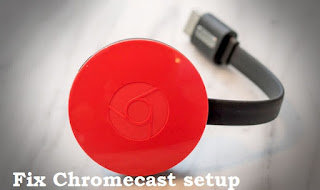10 Tips to Improve Windows 10 Performance
Make Use of a Flash Drive with Ready Boost
If your computer system simply does not have sufficient memory to stay up to date with today's Memory starving applications, you could give Ready Boost a try. Simply plug in a flash drive, and in the Autoplay dialog under general alternatives click "Speed up my system". Then in the Characteristic dialog box click the Ready Boost Tab choose how much of the flash drive to utilize and afterwards click "OK". Your system will certainly start making use of the flash drive as extra memory. (chromecast app for pc)
Disk Clean-up to Remove Old Data
The Disk Cleanup utility eliminates old short-lived data that are taking up room that could be made use of by the operating system to boost performance. If you have actually utilized your system a lot than you probably have a great deal of temporary data just occupying room.
To eliminate these data click on the Windows switch and also type Disk Cleanup. After that open up the Disk Cleaning application. Windows will certainly ask you which disk to run the cleanup energy on. Select your Os drive (normally c:-RRB- and click "OKAY". Windows will certainly after that evaluate your disk drive and also reveal you how much area can be redeemed using the Disk Cleaning energy. Select the short-term items you want to get rid of as well as click "OK". Windows will ask you for verification and after that will certainly go to function. When the cleaning energy finishes you need to have much more disk area for your Operating System to utilize.
Disable Fancy Visualizations
Windows 10 has extremely expensive visualizations such as clear window boarders as well as fading system messages. Your computer has to make all these visualizations. This is OK if your system is greater end, however if your computer system is on the older side you could want to disable these visualizations to get back system performance.
To disable the Windows Visualization results as well as speed up your computer click on the Windows button as well as type "sysdm.cpl" without the quotes. After that click on the Advanced tab. Then click the Performance Box Setups switch. Finally, select "Readjust for finest performance" and click OK. Additionally, you can deselect each thing by hand if you intend to fine tune your optimization. Windows will not look as pretty, however it should run quicker.
Windows Troubleshooter
Windows now has an integrated in tool to locate and repair typical problems. Given that it's already set up and readily available for usage it's worth a try. If you experiencing security troubles or discovering system errors, it could be brought on by a system configuration issue or a corrupted documents.
To go through the constructed in Windows troubleshooting software application click the Windows Key and also type "locate and fix" (without the quotes) and also click on the "Find and take care of troubles" web link. After that click with the classification as well as descriptions to try and also solve any type of system issue you may be experiencing.
Uninstall Unneeded Software Program
Mounted software program occupies sources such as disk area. Additionally if the program has a service that runs a process on startup it is occupying CPU time that could be used for various other points. 1 or 2 applications aren't regrettable, yet when you have 20-40 applications they build up.
To remove unnecessary applications, click on the Windows button and after that click setups. Following click System, as well as ultimately click on Application & features. Look through the checklist of all the set up software and remove anything you do not require anymore. After you are done provide your system a fresh reboot to ensure your System memory obtains removed.
Obtain an SSD
So one of the most significant things I saw concerning Windows 10 thus far is that it can be extremely disk active. After updating a Windows 8.1 laptop computer to Windows 10 I uncovered the disk usage was obtaining 100% usage mostly all the time. This laptop computer had actually a magnetic based plate design hard disk drive which is a whole lot slower than system memory. This triggered it to have difficulty staying on par with the requiring Os. If your system gets on the older side, you are possibly in the same watercraft and also have a magnetic based platter hard disk as well.
Solid State Disks (SSDs) make use of non-volatile flash memory to store details. Essentially they are quick really large USB Flash drives. If your system disk is causing your operating system to slow down than you can definitely notice a rise in system efficiency. Your system will certainly boot method quicker as well as will certainly be extra receptive.
To see if your system is experiencing high disk usage open Task Supervisor by holding back Ctrl+ Alt+ Erase (without the + signs) then click Job Manager. After that click on the Efficiency tab. If your disk drive/s show close to 100% most of the time than you will certainly take advantage of a SSD upgrade.
Disable any type of Unnecessary Procedures on Startup
It looks like every piece of software application wants to run a process on start-up to you know "update". How typically do you assume updates appear? All the other time the procedure is looking for updates, checking for updates, as well as who knows what else. You do not need it running all the time specifically if you are short on system sources already.
To disable procedures from running on start-up open the job manager by holding the keys Ctrl+ Alt+ Delete (without the + indications). After that choose Task Supervisor. Click on the Start-up tab. currently evaluate the listing of software program and disable as required. Ideally this will certainly acquire you back some system sources as well as trigger your system to come to be a lot more responsive.
Disable Unneeded Solutions
This is a big one. Allowed solutions suggest procedures running regularly and also taking system resources away from the user. Not only are they operating on startup, yet they keep the process going even if it gets quit from Job Manager or crashes. A great deal of services is required for the operating system, yet third party applications can configuration services when they are mounted. If you are not running a server of some type than you probably don't require that software application running at all times.
To disable solutions from running automatically click the home windows switch and after that type msconfig and also hit enter. Click the Services tab. After that I recommend inspecting package to "Conceal all Microsoft Services" to ensure you do not quit an important service that the Operating System relies on. After concealing the Microsoft services, you will certainly obtain a listing of services to undergo.
Most of these can be securely handicapped. If you remain in uncertainty leave it enabled, or disable it as well as see what takes place. You can always re-enable the solution using the very same process. When you are done click the alright switch. Windows will certainly prompt you for a reboot. This is required for the modifications to work, so go on and also reboot. After a reboot you will certainly get a turn up indicating that system setups were altered. Given that you triggered the modifications you can securely overlook that message. If you had the ability to disable a decent amount of services, you must see a bump in system performance.
Make Use of a Different Browser for Internet Browsing
Thus far my experience with Microsoft Edge (the new integrated in Web browser in Windows 10) is that it's buggy and sluggish. A lot to ensure that I have actually begun using Google Chrome for my entire internet surfing. It does not have to be chrome, however if you are irritated with a slow-moving buggy net surfing experience you may try mounting a third party internet browser.
Upgrade versus a Fresh Install
So you took Microsoft up on the deal for a free upgrade as well as currently your system is sluggish? If you have ever had any kind of experience with Windows upgrade installments, you could have experienced a slow system or errors that turned up for relatively no factor. I have never ever had terrific good luck with Windows upgrades and if you ask any type of IT man they will probably tell you to prevent them as well as opt for a complete fresh install. Windows 10 appears to be no various to its precursors. Utilizing a fresh install versus an upgraded set up can boost your system efficiency, and also if you have exhausted all other choices you might intend to give it a try.



Comments
Post a Comment